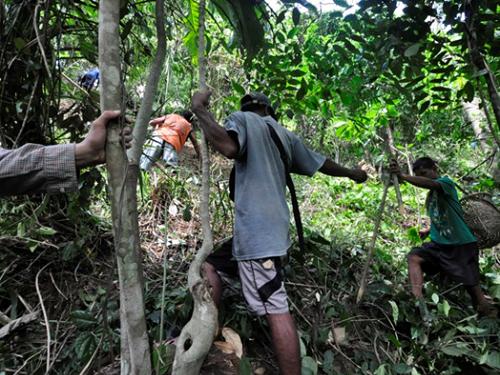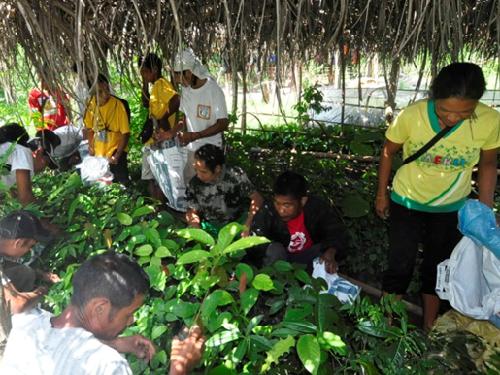Hendrik Freitag
Other projects
This RSG project aims to educate and to sensitize local communities, policy-makers, and students in regard to forest conservation and sustainable management. An important step will be training in “Rainforestation Farming”, the establishment of a nursery and reforestation with native tree species.

Due to its geological origin, the Philippine island of Mindoro is characterized by an overwhelming proportion of endemic biodiversity. Nevertheless, most original habitats have been altered or removed. One Key Biodiversity Area (KBA) on the island is found at the Mt. Hinunduang and in the upper Baroc River Catchment. It was classified as being of very high biological importance and extremely high critical conservation priority (“EHc”) due to high socio-economic pressure.

This conservation project will focus on this area by the following strategies:
(1) education of local communities, students, and policy-makers in regard to small scale forest conservation and sustainable management;
(2) introducing “Rainforestation Farming” as a suitable strategy for sustainable land-use aimed to enable both, the upgrading of the livelihood status of local communities and the conservation of indigenous biodiversity at all ecosystem levels;
(3) establishing a nursery for native hard-wood and fruit trees;
(4) rehabilitation of the forest cover in selected areas by use of indigenous tree species that are best adapted and biodiversity-supportive;
(5) supporting of the Buhid indigenous people in the KBA in implementing an Indigenous Community Conservation Area (ICCA) by registration with the IUCN.
This endeavour is realized by a team of faculty members of the Department of Biology of the Ateneo de Manila University, San Vicente Barangay officials, Buhid indigenous people representatives, student members of the Ateneo Biological Organization – eXplore. eXperience. eXcel (BOx) and by the support of "Rainforestation" and conservation experts from several Philippine institutions and organisations.
The activities include workshops, meetings, an educational tour to well-established "rainforestation" sites, a socio-economic survey in the focal area, a botanical survey to identify potential mother-trees, collection of seeds and rearing of seedlings, and planting of native pioneer trees, hard-woods and fruit trees in pilot sites of the area.